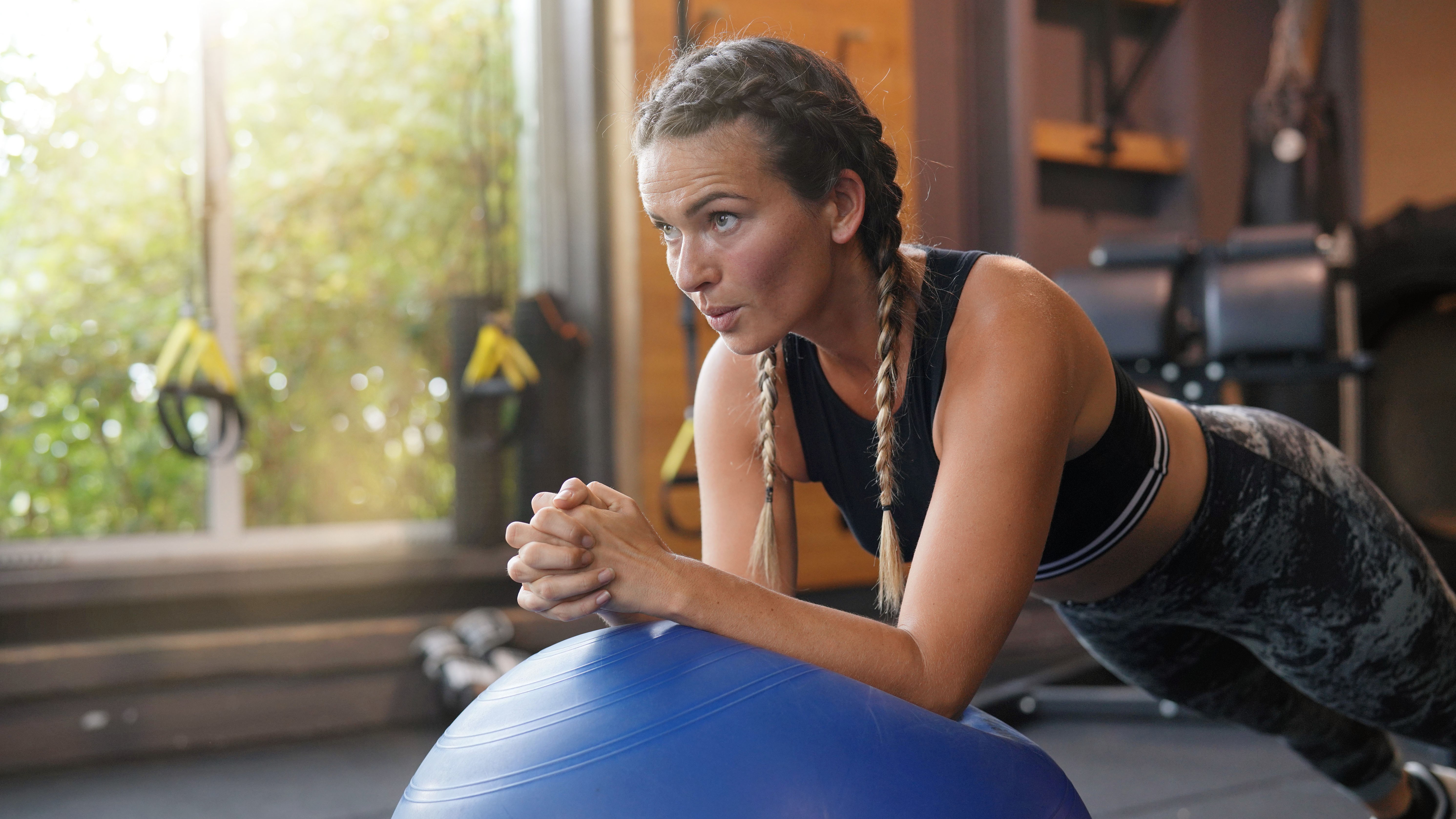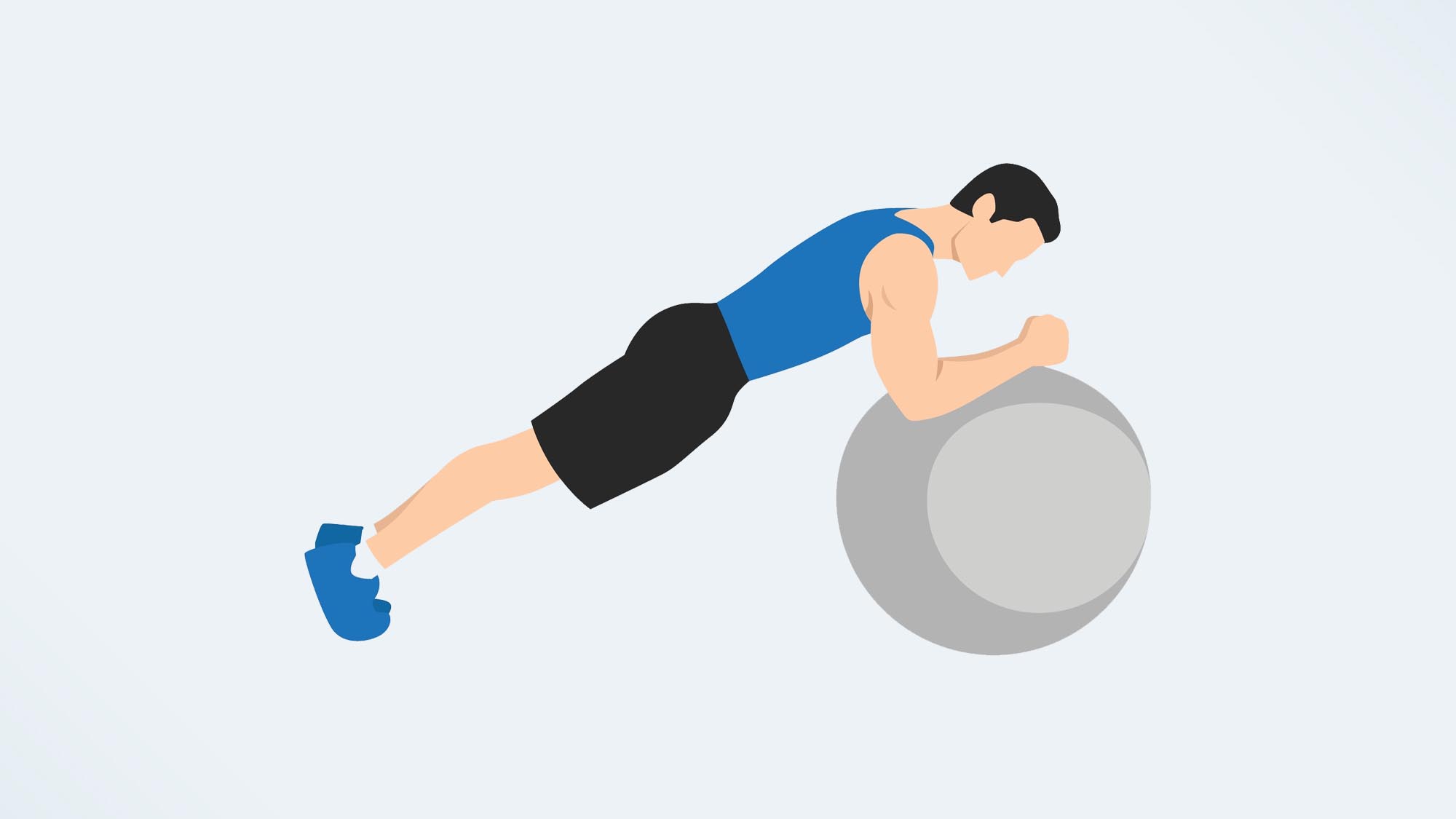I did a Swiss ball plank for a week — here’s what happened to my abs
Is this the secret to sculpting your lower abs?

If you’re looking to up the intensity of your ab workouts, there might be one piece of equipment you’re neglecting in the gym, or in your home workouts. Put your best adjustable dumbbells and the best kettlebells to one side; I’m talking about a Swiss ball (also known as an exercise or yoga ball).
Swiss balls are inflatable spheres made of thick plastic that typically range between 45 and 85 centimetres in diameter. Often found in medical settings as well as gyms, they’re great for improving mobility, developing better balance, and building muscle strength and endurance — especially for those new to exercise. To find out more about the benefits of exercising using a stability ball, I did a plank using one every day for a week. Read on to find out what happened.
As a reminder, what works for me might not be right for you and your body. If you’re new to exercise, or you’re returning to exercise following an injury or pregnancy, it’s a good idea to check with a medical professional or personal trainer before adding swiss ball planks to your routine. If you’re a complete beginner, it’s worth practicing bodyweight planks before progressing to this exercise.
How to do a Swiss ball plank
Due to its nature, a Swiss ball plank is a more advanced version of the plank, as your core has to work harder to stabilize your body on the ball, which works as an unstable surface. All you’ll need for this exercise is an exercise ball — ensure it is inflated.

- Start by kneeling on the floor with a Swiss ball in front of you.
- Place your elbows on the Swiss ball and press down into the ball.
- Engage your core and step one foot back into a high plank position, and then the other. Keep your hips steady, and think about making a straight line from your shoulders to your feet. Keep your abs and glutes engaged.
- Hold here, keeping your elbows pressed into the ball. Don’t let your hips dip.
- To up the ante, make small circles on the ball with your elbows, or try Swiss ball roll outs, where you keep holding the plank position, but slowly roll the ball a few inches away from you.
The key to this move is to keep your body rock-solid in the plank. Do not let your torso or hips rock from side to side in this move.
I did a Swiss ball plank for a week — here’s what happened to my abs
Would adding a stability ball to my planks make all that much of a difference? I set out to answer that question.
I felt this in my abs, back and shoulders
The deep core shake was real with this plank variation. Unlike planks on the exercise mat, I felt my core really having to engage to keep my body stable in this move. I also felt the exercise in my back and shoulders, as I really had to brace my torso to remain steady on the exercise ball. A personal trainer in the gym told me to think about really pushing my elbows down into the ball during this exercise.
Sign up to get the BEST of Tom's Guide direct to your inbox.
Get instant access to breaking news, the hottest reviews, great deals and helpful tips.
For the first day of this challenge, I aimed to hold the plank for a minute. Each day I added 10 seconds to the hold to try and increase the intensity.
It was easy to mix things up
The joy of using a stability ball is that it’s an extremely versatile piece of equipment, especially when it comes to working your core. As with a lot of these week-long challenges, by the end of the week, I started to get bored of the move. On day four, I opted to do plank pikes instead of stability ball planks. For this exercise, I placed my feet on the stability ball, with both toes on the ball and my core engaged.
From here, you need to slowly lift your hips into the air and allow the ball to roll slightly forward. Keep your legs locked — don’t bend at the knees. Lower your hips to the starting position, rolling the ball back as your hips drop. I did these for a minute and my core was on fire.
Another day, I did a plank for a minute, then added 30 seconds of stirring the pot. For this exercise, you keep your elbows pressed into the ball and make small circles. After 15 seconds, I switched direction.
Finally, on the last day of the challenge, I added Spiderman planks to the routine. From a plank position on the Swiss ball, I brought one knee up to touch my elbow on the same side, before extending it back to a full plank position. I then repeated on the other side, and kept switching sides for 30 seconds. I really felt this in my obliques, which had to work extra hard to stabilize my body as my legs moved.
I’ll be using the stability ball in more of my workouts
Of course, there weren’t any visible changes to my abs after a week of stability ball planks, but I definitely felt like I’d worked my core hard, and was surprised by how difficult the ball made simple plank exercises. For a relatively cheap piece of gym equipment, you’re getting a lot from a stability ball, it’ll always double as an office chair if you want to work your core while you, well, work.
Strong abs are important for anyone looking to improve their posture and reduce their chances of lower back pain, but they can also help you run faster, and lift heavier weights. That said, if sculpting visible ab muscles is your goal, it’s a good idea to focus on your overall body fat percentage — here’s how to calculate yours, and why it matters.
More from Tom's Guide

Jane McGuire is Tom's Guide's Fitness editor, which means she looks after everything fitness related - from running gear to yoga mats. An avid runner, Jane has tested and reviewed fitness products for the past five years, so knows what to look for when finding a good running watch or a pair of shorts with pockets big enough for your smartphone. When she's not pounding the pavements, you'll find Jane striding round the Surrey Hills, taking far too many photos of her puppy.
